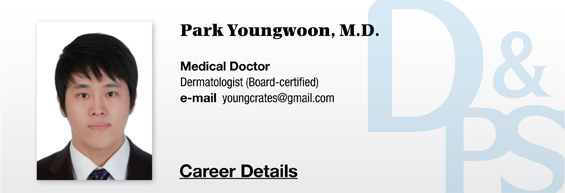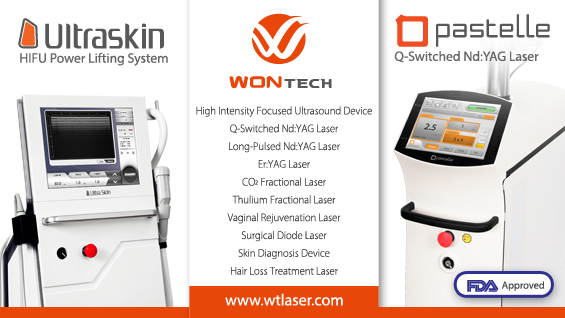* Acceptable secondary publication
* This article was published in the Medical Lasers.
* The authors have received approval from the editors of the Medical Lasers and the D&PS.
Kim et al10 reported some interesting results. This study focused on punctate leukoderma developing after laser toning treatments performed in 259 patients. With this large number of patients it provides sufficient statistical power to the rate of hypopigmentation. Also, it was written by the same authors who published the above-mentioned study,9 and we was able to compare the findings in two studies.
In this study, the 1,064 nm QS Nd:YAG laser (MedLite C6, Hoya ConBio, Fremont, CA, USA) was used with 2-week intervals. Two passes at a fluence of 1.6J/cm2 and a 6mm spot size were given over the entire face and two more passes were given only over melasma lesions at 2.2-2.5J/cm2, and a 4mm spot size.10 Three (1.6%) out of 259 patients developed hypopigmentation.
In this study, the parameters were maintained the same as the authors’ previous study, except for the fluence which was lowered to about 50-60% of that used in the previous study9,10. It is interesting to note that the rate of hypopigmentation is much lower in this study. Although the fluence was lower than the previous studies, it was still higher than the levels normally used in today’s clinical practice (2.0J/cm2 or less).
Polnikorn11 reported the literature which has been extensively cited since its publication in 2008. The author reported two cases of intractable dermal melasma treated with a 1,064 nm QS Nd:YAG laser. It was mentioned that they treated dermal melasma with “repeated sub-threshold photothermolysis using a 1,064 nm QS Nd:YAG laser” in over 500 cases in the past two years.11 Although the authors did not reveal the exact rate of hypopigmentation, they cautioned against overtreating with MedLite C6 due to the risk of mottling hypopigmentation.
[Advertisement] Ultra Skin/Pastelle – Manufacturer: WONTECH(www.wtlaser.com)
However, the two melasma patients were given 10 weekly treatments using 20 passes at a 6 mm spot size and a fluence of 3.4J/cm2, which can be considered an “overtreatment,” compared to the milder parameters used today. Another study, which were published in 2011 by the same authors, combined topical arbutin therapy with laser toning using a 1,064 nm QS Nd:YAG laser in 35 patients.18 They used 20 passes at a fluence of 3.0-3.4J/cm2 in 10 weekly treatments and found that 8.6% of patients developed guttate hypopigmentation. Again, these parameters are much more aggressive than those used in today’s clinical practice.
The above studies that we have reviewed reported of the risk of hypopigmentation inherent in laser toning therapy. They were all published from 2008 to 2010 when laser toning treatment was still in its early phase. All these studies used much more aggressive laser parameters (high fluence, high cumulative energy, short treatment interval and a high number of treatments, etc) compared to those generally used today.
-To be continued
References
9. Cho SB, Kim JS, Kim MJ. Melasma treatment in Korean women using a 1064-nm Q-switched Nd:YAG laser with low pulse energy. Clin Exp Dermatol 2009;34:847-50.
10. Kim MJ, Kim JS, Cho SB. Punctate leucoderma after melasma treatment using 1064-nm Q-switched Nd:YAG laser with low pulse energy. J Eur Acad Dermatol Venereol 2009;23:960-2.
11. Polnikorn N. Treatment of refractory dermal melasma with the MedLite C6 Q-switched Nd:YAG laser: two case reports. J Cosmet Laser Ther 2008;10:167-73.
18. Polnikorn N. Treatment of refractory melasma with the MedLite C6 Q-switched Nd:YAG laser and alpha arbutin: a prospective study. J Cosmet Laser Ther 2010;12:126-31.






















